Astrocyte layers in the mammalian cerebral cortex revealed by a single-cell in situ transcriptomic map
- PMID: 32203496
- PMCID: PMC7116562
- DOI: 10.1038/s41593-020-0602-1
Astrocyte layers in the mammalian cerebral cortex revealed by a single-cell in situ transcriptomic map
Abstract
Although the cerebral cortex is organized into six excitatory neuronal layers, it is unclear whether glial cells show distinct layering. In the present study, we developed a high-content pipeline, the large-area spatial transcriptomic (LaST) map, which can quantify single-cell gene expression in situ. Screening 46 candidate genes for astrocyte diversity across the mouse cortex, we identified superficial, mid and deep astrocyte identities in gradient layer patterns that were distinct from those of neurons. Astrocyte layer features, established in the early postnatal cortex, mostly persisted in adult mouse and human cortex. Single-cell RNA sequencing and spatial reconstruction analysis further confirmed the presence of astrocyte layers in the adult cortex. Satb2 and Reeler mutations that shifted neuronal post-mitotic development were sufficient to alter glial layering, indicating an instructive role for neuronal cues. Finally, astrocyte layer patterns diverged between mouse cortical regions. These findings indicate that excitatory neurons and astrocytes are organized into distinct lineage-associated laminae.
Conflict of interest statement
The authors declare no competing financial interests.
Figures
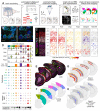
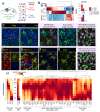

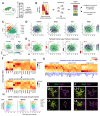
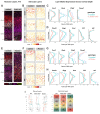
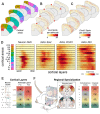
References
-
- Molyneaux BJ, Arlotta P, Menezes JRL, Macklis JD. Neuronal subtype specification in the cerebral cortex. Nat Rev Neurosci. 2007 Jun;8(6):427–37. - PubMed
Publication types
MeSH terms
Grants and funding
LinkOut - more resources
Full Text Sources
Other Literature Sources
Molecular Biology Databases

